1994 Guild DV-52 NT Makeover
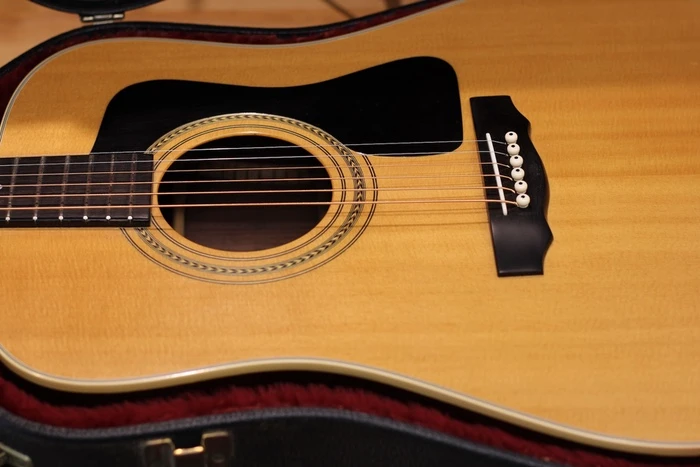
It started with a broken truss rod. Then there was the loose neck joint. Then I found a back plate seam separation. And what to do about the bellying behind the bridge ...

It started with a broken truss rod. Then there was the loose neck joint. Then I found a back plate seam separation. And what to do about the bellying behind the bridge ...
Thanks to a post from member HeyMikey at the Let's Talk Guild forum, I was able to purchase this Guild 6 string from some lovely folks that operate Sussex County Music in New Jersey. They had highly discounted this instrument, realizing it needed repair.
I believe the music store honestly reported what they knew about the guitar. The bridge was securely glued down and the truss rod would need replacing, as it was clearly broken. Photos revealed a missing heel cap and some binding shrinkage and separation. The store priced the guitar accordingly, packed and shipped it right away, and even refunded me some of the shipping costs.
Credit where and when credit is due: The guitar was delivered damage-free, another great job done by UPS.
The original Guild case is in excellent shape. The condition of an original case is often an indicator of the condition of the guitar stored inside. We are always hopeful that the instrument hasn't been beaten to death.
Someone thoroughly enjoyed this guitar, as evidenced by the significant fret wear all the way up and down the fretboard. I love seeing that!
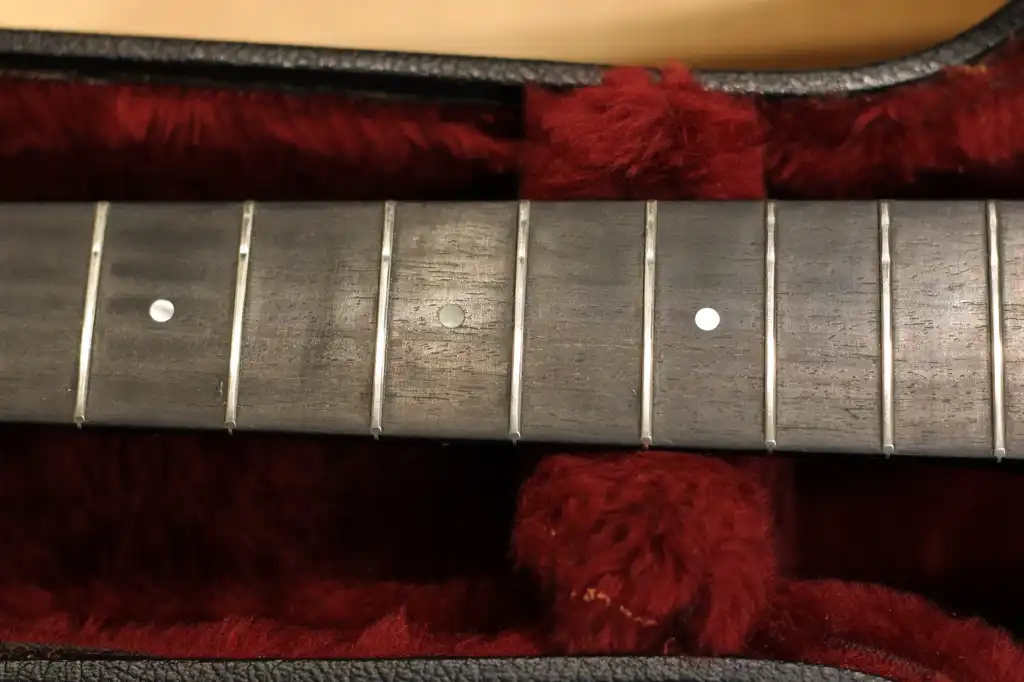
When it was built, this guitar would have been fitted with a compression rod. With this design, a nut is tightened against the raw wood of the neck on the threaded end of a steel rod which is fixed to the wood at the heel. The rod has been pressed into a concave bow in the slot running down the neck beneath the fretboard, and held in place with a thin wooden block. Tightening the nut (against the wood of the headstock) shortens the bowed rod, causing it to want to straighten, thus resulting in a back bow in the neck. This is intended to counter the pull of the strings. There are so many downsides to this design that it was all but abandoned and replaced with the dual-action truss rod. Threads can strip, the neck wood beneath the nut can be damaged, the rod can snap, and/or the rod can slip or pull loose from where it is fixed at the heel.
In the case of this DV-52, one look beneath the the plastic truss rod cover tells the story: we have stripped threads on the rod, the rod is extending much too far into the cavity beneath the truss rod cover, and there is neck wood damage at the headstock end,. All of this damage is likely due to the rod having shifted or pulled free. This confirms what the seller had disclosed. If this was the only thing wrong with this guitar, a repair would involve removing the fretboard, replacing the rod (likely upgrading it to a dual-action truss rod), replacing the fretboard, and addressing finish issues resulting from the repair. A re-fret of the guitar would be in order, as well.
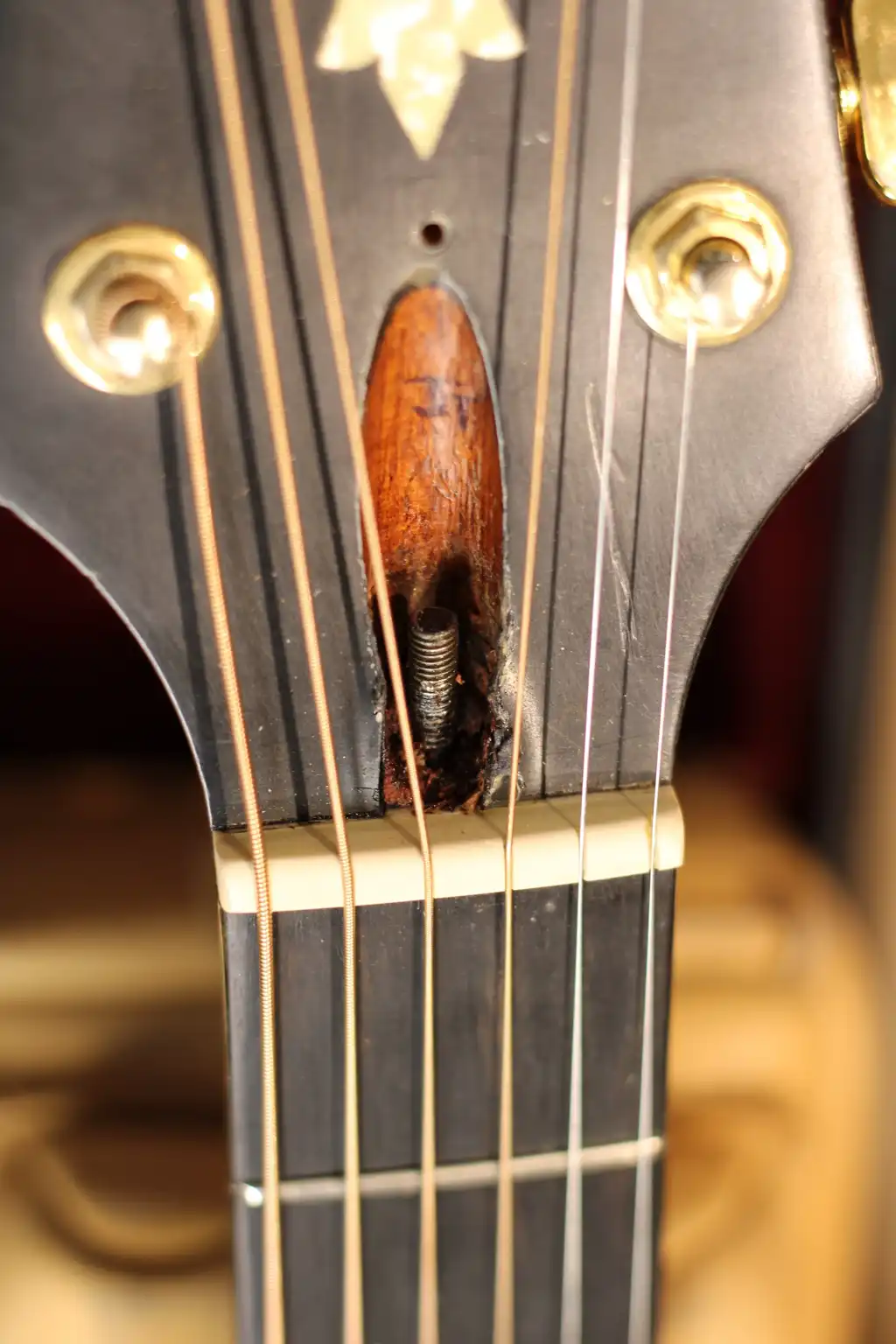
The seller had also disclosed that the heel cap was missing, and a quick glance at the neck heel confirmed that to be so. The binding around the body is noticeably shrinking, as was also disclosed in the photos.
Heel caps don't typically go missing, as in, they rarely just fall off. So whatever caused the cap to come loose is always a cause for concern. A closer look revealed a much more serious problem with the neck. First, the neck joint is loose. The neck can simply rock forward in the joint, pivoting at the fretboard. This would cause the action to be excessively high when the strings are tightened to pitch, which I confirmed by simply tightening the strings to pitch. LOL
I was hoping I could address the fretboard issue with the neck attached. But the loose neck joint requires the neck to be reset. Oh well, that's the way these things go.
But wait, it gets worse!
The side of the guitar is actually split in two places, where it is separating from the neck block when the neck is flexed. This means that I cannot simply reset the neck. I need to address the loose sides, as well.
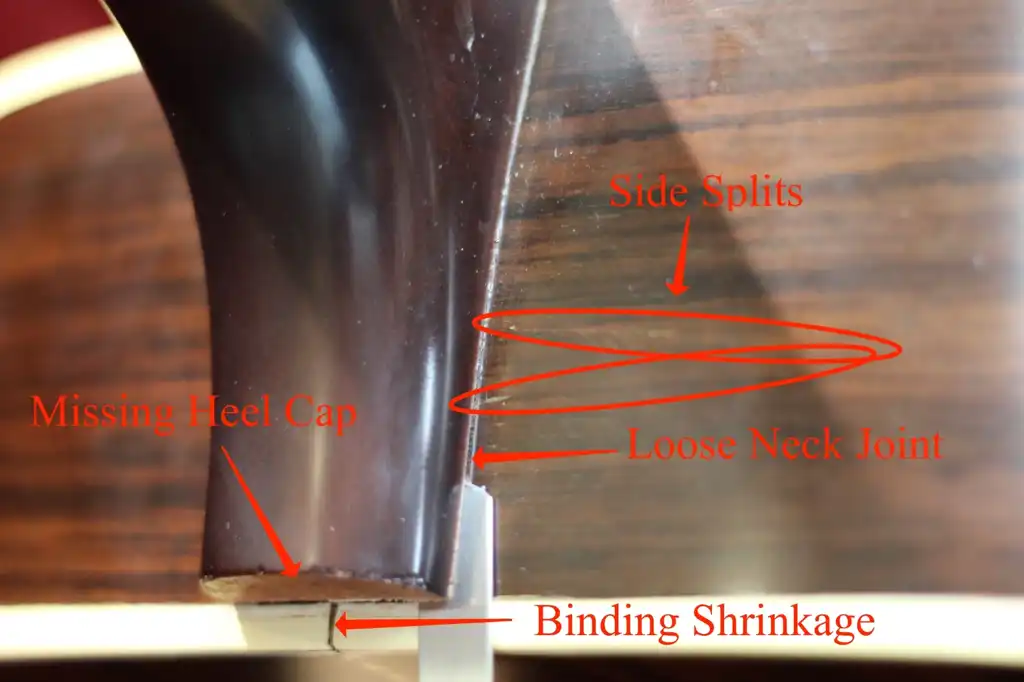
Remember what I was saying about the condition of the guitar case? Well, A.) It isn't a hard and fast rule, and B.) if it does apply, it kind of only applies to guitars that are actually in the case when tragedy strikes.
The neck alone informs me that this guitar has obviously suffered at least one traumatic injury outside of its case. Now that I am thoroughly suspicious, let's keep looking . . .
There is unusual finish checking on the soundboard that is not consistent with sudden temperature change. The finish has stress fractures that travel from the lower bout under the bridge and into the soundhole. Hmm . . . what am I seeing here?
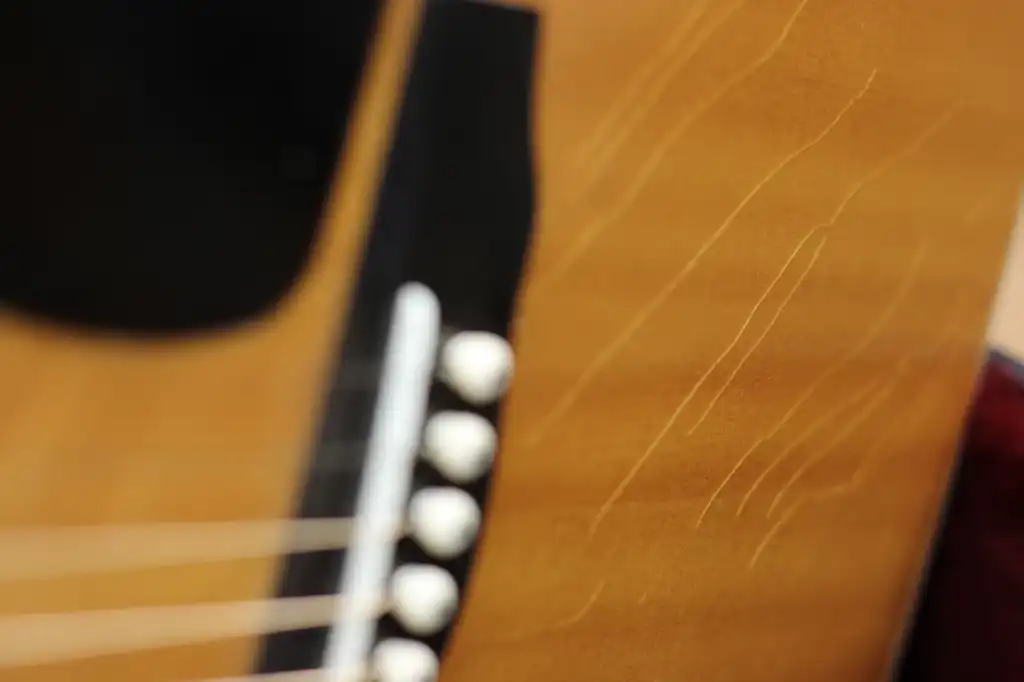

What else may have happened to this guitar? Stress fractures such as these would most likely be telltale signs of serious impact, somewhere. With all my lutherie alarms going off at once, I look more closely at the finish, focusing on the binding. Can you see what I see?
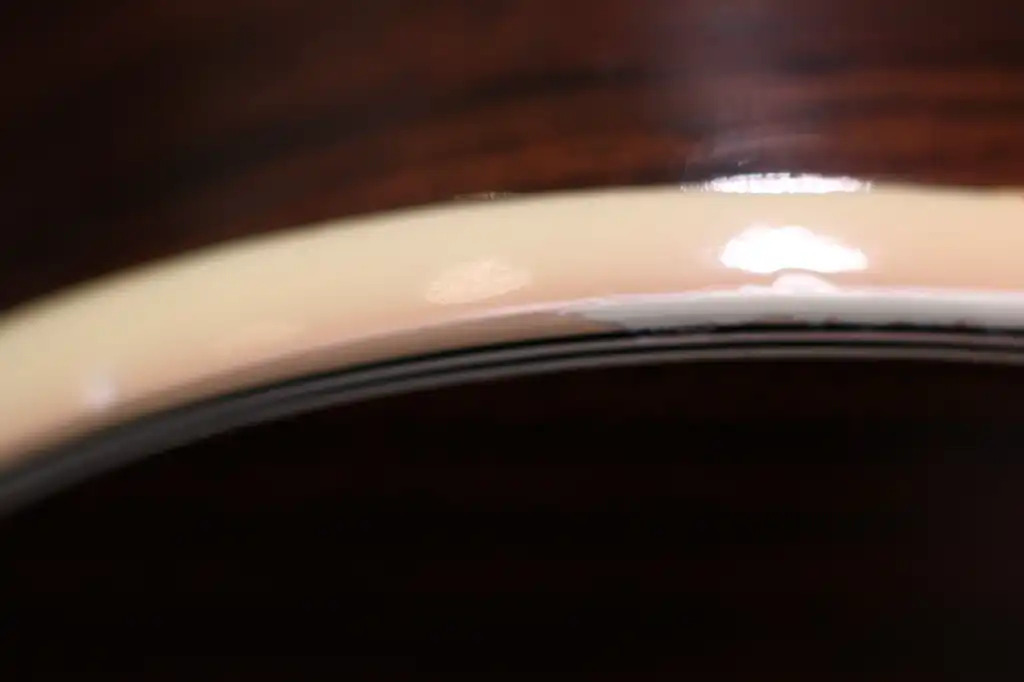
The finish is tinted. While tinting is not completely uncharacteristic for a Guild guitar, two things stand out to me: First, the back and sides of this guitar are Rosewood, which would not normally be tinted. Secondly, and more significantly, this particular tinting does not continue all the way around the entire perimeter of the binding. What does that indicate? It means there was a partial refinishing that occurred at some point. The detective in me asks, "Why?" I break out my endoscope to have a look inside, and guess what I discover?

See that "winding river" line running from the soundboard to the back, across the lower bout? The side on this guitar was severely cracked! I must complement whoever did the repair, though. It is a first-rate job on the Rosewood. The rose tinting across the binding is what gave it away.
Perhaps there is a learning opportunity for some who may read this. This instrument had been expertly "repaired." Some might even go so far as to claim it was "restored." Did it retain its "vintage" status? The guitar is currently unplayable, and it sold for "project guitar" money, not "vintage guitar" money. But it WAS repaired/restored at some point. It certainly isn't going to be showcased in any museum that I am aware of, unless it can come with a sign warning, "Don't let this happen to you!"
My point? "Vintage" isn't always all it's cracked up to be! 😊
While I am looking inside the guitar, here is the date stamped on the neck block:
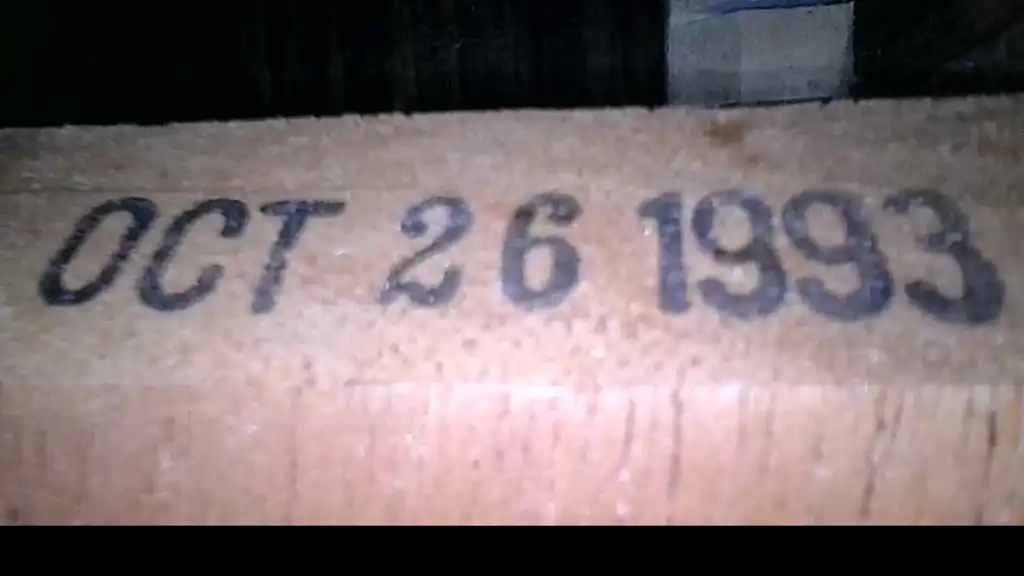
As of the date of my inspection (time-stamped in a photo, above), just over three decades have passed since this guitar was assembled. At a tender 30 years of age, this Guild definitely qualifies for a "makeover." I'll need to set it aside for awhile, as this will be a pretty big project that ties up my small shop resources.
But check back, again.